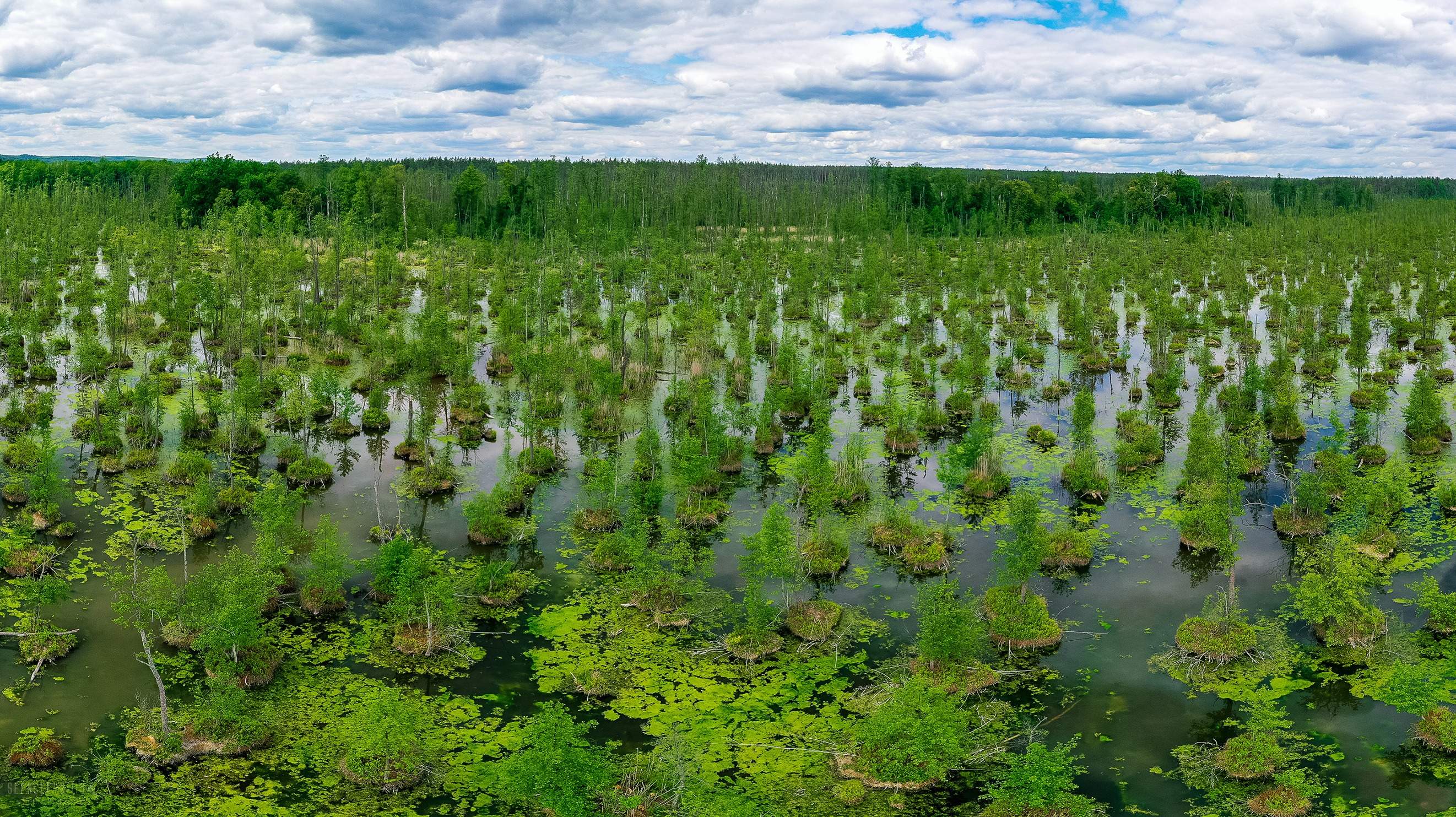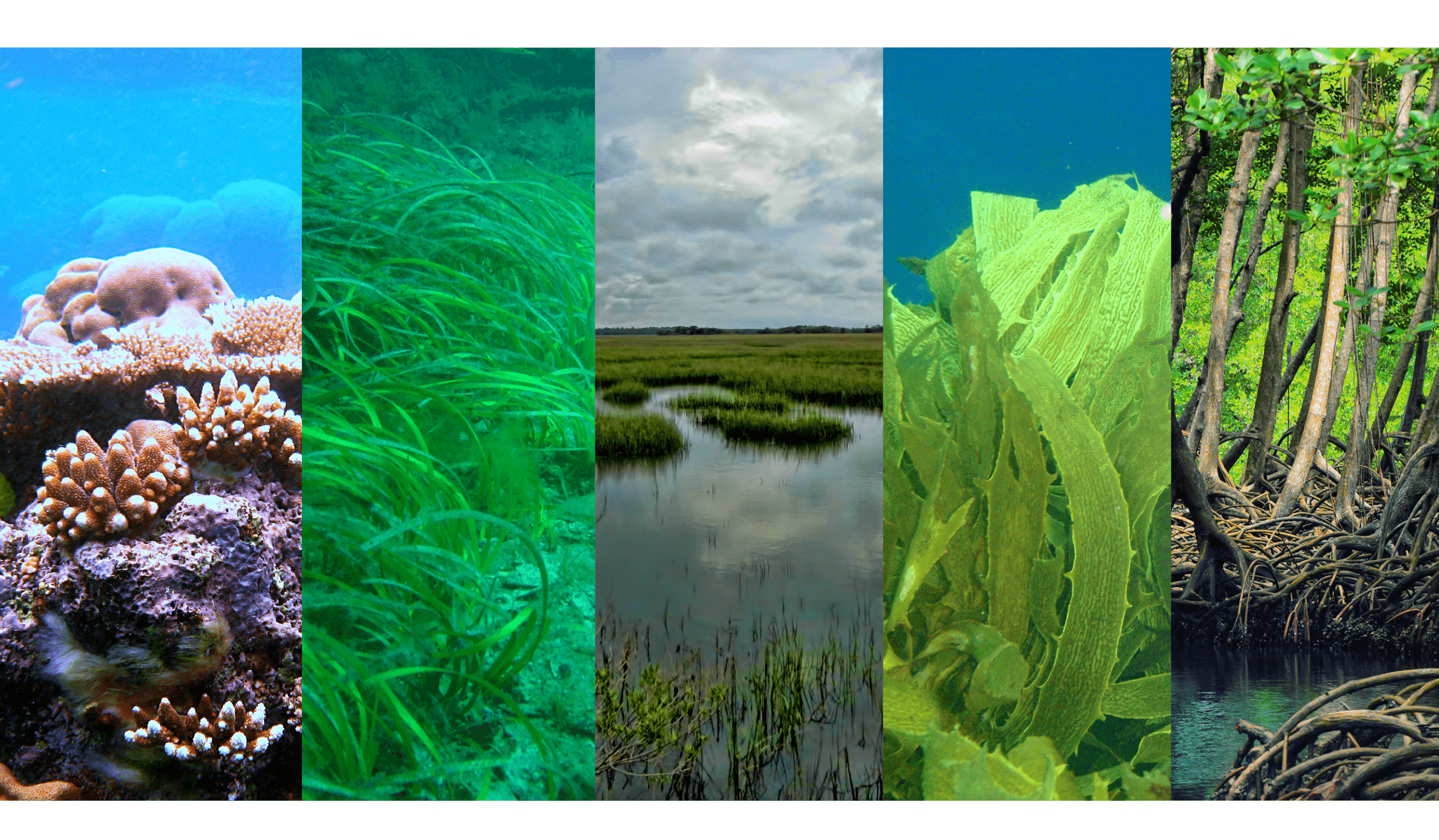Coasts & Wetlands Overview

WETLANDS ARE AMONG THE MOST CARBON-DENSE AND BIODIVERSE ECOSYSTEMS ON EARTH, WITH HABITAT FOR UP TO 40% OF ALL SPECIES.
OVER HALF OF THE WORLD'S WETLANDS HAVE DISAPPEARED SINCE 1900.
Protecting and restoring wetlands can reduce and absorb up to 5% of annual greenhouse gas emissions, make our coasts more resilient to rising seas, and prevent the loss of rare and essential habitats.
map sources: Inland Wetlands: Fluet-Chouinard et al 2015. "Development of a global inundation map..." | Peat: Peatland Distribution. Global Peatland Database. 2022. | Rivers: Camille Ouellet Dallaire et al 2019. A multidisciplinary framework to derive global river reach.. | Mangroves: World Map of Mangrove Distribution. Giri, C. et al. 2008. | Salt Marsh & Seagrass: Global Distribution of Blue Carbon Ecosystems. Blue Carbon Initiative. CI, UNESCO, IUCN | emissions reductions and offsets potential based on estimates from Project Drawdown, World Resources Institute, The Nature Conservancy and Griscom et al. Natural Climate Solutions. PNAS (2017)

"PEATLANDS, A PARTICULAR TYPE OF VEGETATED WETLAND, STORE TWICE AS MUCH CARBON AS THE WORLD'S FORESTS...
Yet, over the past 200 years, wetlands have been drained to make way for farmland or infrastructure development... Around 35 per cent of the world’s wetlands, which also reduce the impact of flooding and cleanse polluted water, were lost between 1970 and 2015. The loss rate has been accelerating since 2000."
Peatlands, which exist on every continent, cover 3% of the earth’s land but only 2% are currently protected. Coastal wetlands, which are among the most productive ecosystems on earth, make up only 0.3% of earth’s land area, and only 26% are currently protected.
sources: "Drive to protect world’s wetlands gains momentum," UNEP. February 1, 2023. unep.org. | World WildLife Fund “Threats to Wetlands”

"BLUE CARBON HABITATS MAY STAND ALONE AS THE MOST EFFICIENT BIOLOGICAL RESERVOIRS OF STORED CARBON ON EARTH."
“Coastal ecosystems are some of the most productive on Earth... [offering] coastal protection from storms and nursery grounds for fish... and sequestering and storing “blue” carbon from the atmosphere and oceans... [they] are an essential piece of the solution to global climate change.”
-Ariana Sutton-Grier (Director of Science, Nature Conservancy) | “Study: Restoring Wetlands Could Help Fix Climate Change” Kevin Enochs, Voice of America, Feb. 01, 2017; “About Blue Carbon” the buecarboninitiative.org | image: Everglades, National Park Service

"NATURAL HABITATS INCLUDING WETLANDS, DUNES, BARRIER ISLANDS, SEA GRASSES, CORAL AND OYSTER REEFS, AND MANGROVES REDUCE THE RISK OF COASTAL FLOODING AND EROSION."
“These natural and hybrid approaches may be more cost-effective in the long-run in comparison with built infrastructure...”
“Future of our coasts: The potential for natural and hybrid infrastructure to enhance the resilience of our coastal communities.” Sutton-Grier et al. 2015
Next solution



Learn about Maya Lin’s fifth and final memorial: a multi-platform science based artwork that presents an ecological history of our world - past, present, and future.

Discover ecological histories and stories of former abundance, loss, and recovery on the map of memory.

Learn how we can reduce our emissions and protect and restore species and habitats – around the world.

See how art can help us rethink the problems we face, and give us hope that each one of us can make a difference.

Help make a global memorial something personal and close to home. Share your stories of the natural world.